Table of contents
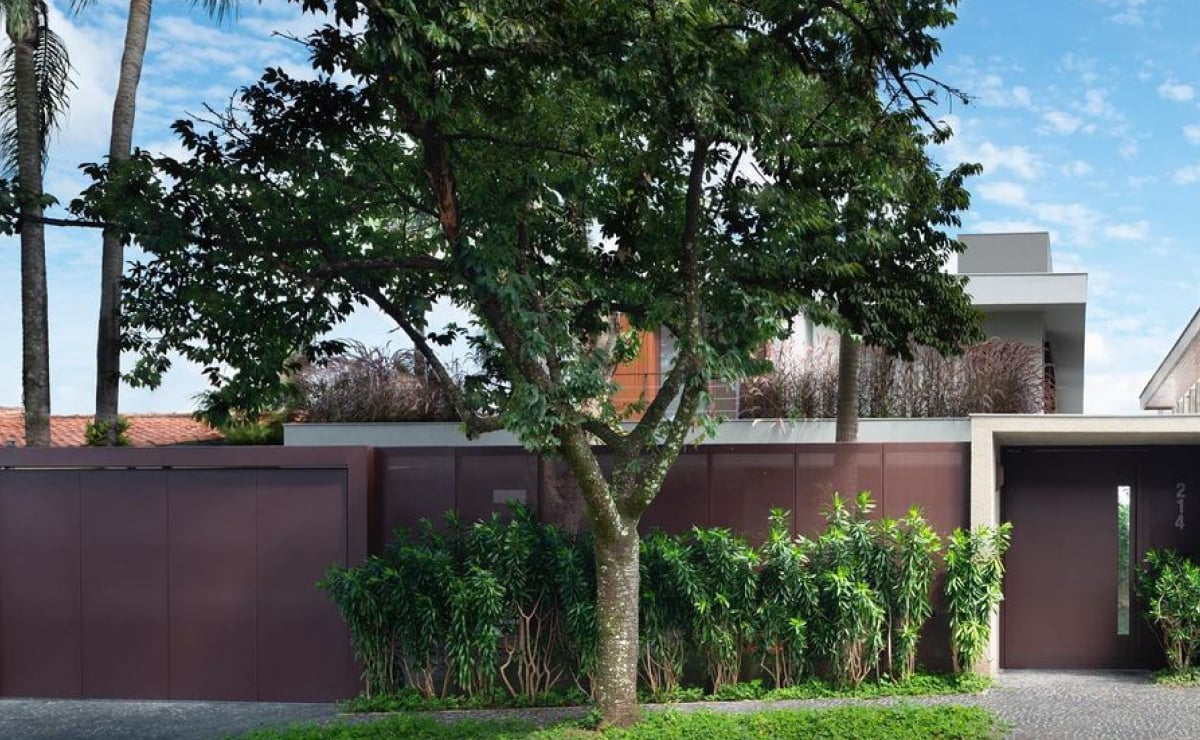
In the midst of concerns about the environment, urban forestry is an interesting solution to improve the quality of life in large cities and to further beautify the spaces. Planting trees also plays a key role in balancing the environment, combating pollution and improving the urban look and the facade of the house. Is there anything better? But, if when thinking about planting trees inYour House spoke with a specialist on the subject to guide you in the search for a more wooded and beautiful place.
First of all, it is important to know that the Municipality of São Paulo has defined specific parameters for the planting of trees on public or private streets, such as the distance between the sapling to be planted and the surrounding elements, the species of trees indicated for each location, and many other guidelines. Therefore, in cities like São Paulo, the Municipality is the main responsible for the planting ofBut if you decide to do it yourself, the agency presents a Tree Planting Manual with the necessary parameters in a very complete way! The ideal is that you always communicate with your city hall to obtain clear guidelines for the planting determined in each region.
The Manual for Arborization in São Paulo, for example, advises that, in order to avoid conflicts with the space, it is necessary to consult the agencies responsible for construction and installation of equipment on public roads, such as the Department of Public Lighting and the Subprefecture, before preparing the project.
In the document, the first step is the establishment of permeable beds and strips, that is, around the trees, a bed, strip or draining floor must be adopted, for the infiltration of water and soil aeration. Then, it is necessary to define the species, based on an analysis of the site. Finally, it is necessary to know the planting guidelines in order not to damage sidewalks and electrical networks. Caseif you don't live in São Paulo, look for your city's City Hall to plant your tree in accordance with the laws in effect for your region.
How to choose the ideal tree?
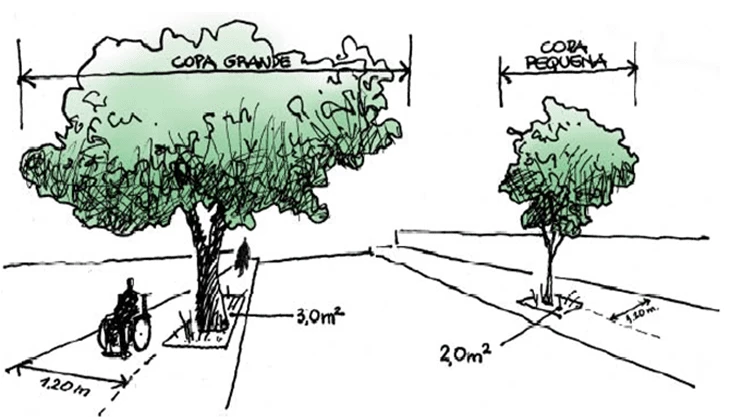
According to the architect and landscape designer Celina Hirata, the choice of the ideal tree involves several factors: "In narrow streets with electric power lines, the ideal trees are small, while in streets with wide sidewalks the ideal trees are small.and without wiring allow medium-sized and, in a few cases, large trees", explains the professional.
It is also important to take into account the type of foliage, choice of flowering, the attraction of birds and animals so that the tree species meets not only technical issues, but also the aesthetic and life values of the tree.
"The width of the sidewalk and the presence or absence of a power line are factors that directly influence the type of tree to be planted. It is important to know what the final size of the tree will be when it is adult in order to know if it will really fit on the site. Sometimes we see a tree on the street that we like, but it is not yet in its adult form and so we think it will fit on our sidewalk, but sometimes theHer end port is too big and not ideal for our sidewalk," comments Celina.
The choice of the ideal species can also be an act of urban kindness, according to Celina. She explains that defining the correct tree, which is native to the local biome, collaborates in the so-called Sustainability and Environmental Education.
Does the type of leaf influence the choice?
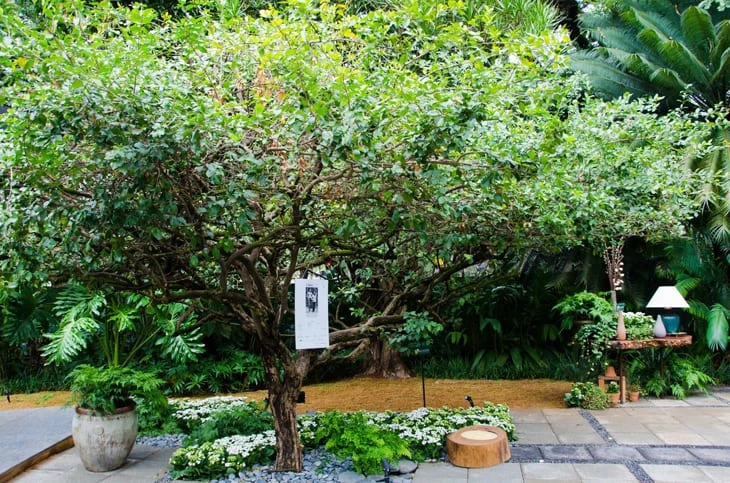
The landscape designer Clariça Lima explains that if we think about the maintenance and safety of a place with a lot of people circulation, the type of leaf does influence the choice of the tree.
"Near the gutters it is interesting to have trees with larger and more persistent leaves, to facilitate maintenance. Trees with deciduous leaves are great to ensure more sunlight in winter in colder regions, since they only form shade in the rainy and hotter seasons. Palm leaves can be dangerous due to their weight, and should be avoided in areas with a lot ofpassage," he explains.
Celina further explains that the type of foliage influences the passage of light through the canopy and the effects of flowering: "A tree with wider and denser foliage will provide greater shade, while a tree with thinner foliage and smaller leaves will provide less shade and give the beautiful lacy shade effect.goal is to get good shade, trees with denser foliage are a better choice," explains the professional.
In addition, there are trees called "evergreen," "semi-deciduous," and "deciduous," whose name is related to the tree's leaf fall at certain times of the year. If the idea is for the facade of your house to receive sun during the winter, for example, the ideal is to opt for trees with leaf fall. But if leaves spread on the sidewalk is not an option, choose evergreen species.
"Trees like the yellow ipê, for example, whose leaves fall and the yellow blossom appears when the tree is practically bare of leaves, makes the blossoming much more noticeable and striking!" comments Celina.
What can the wrong planting cause?
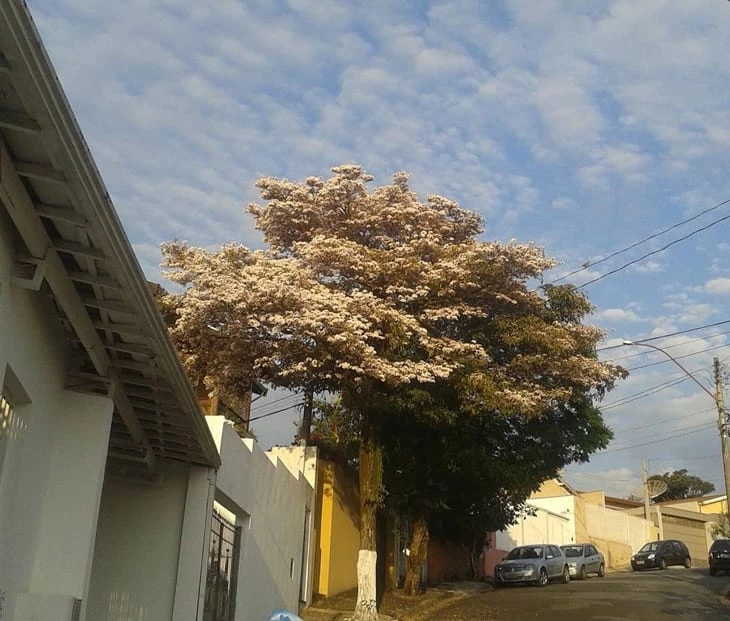
It is necessary to be careful with the wrong planting. After all, besides harming the tree, you can also suffer from the damage. A tree considered to be large, if planted in a narrow sidewalk and with an electrical network, can lead to future problems such as, for example, the destruction of the flowerbed and the surrounding stretch of sidewalk.
Another tip is to pay attention to species with large fruit, such as the mango and avocado trees. These types are not recommended because of the risk of accidents with falling fruit, which is heavy and can hurt.
General care when planting trees on the sidewalk
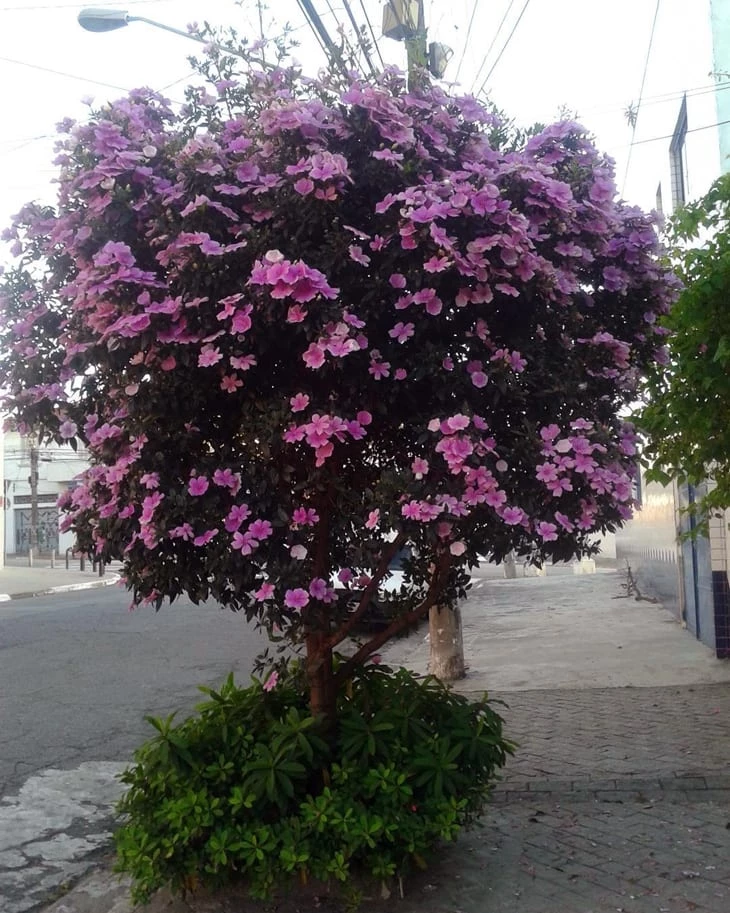
- After planting, you need to take care of the seedling by watering every other day for the first few weeks;
- In the first two years it is also recommended to water in the months without rain;
- Choosing a semi-permeable floor covering, such as drainage concrete slabs, also helps in better draining the rainwater to the roots and thus contributes to a healthier growth of the tree;
- The lateral and base shoots of the seedling must be periodically removed to give it more strength: "This helps in the formation of the tree, preventing it from becoming a bush and harming the passage of pedestrians when planted on the sidewalk. Remembering that tree pruning in the city of São Paulo is prohibited and must be done exclusively by the City Hall technicians, who can be requested atnumber 156," explains Celina.
Speaking of decoration...
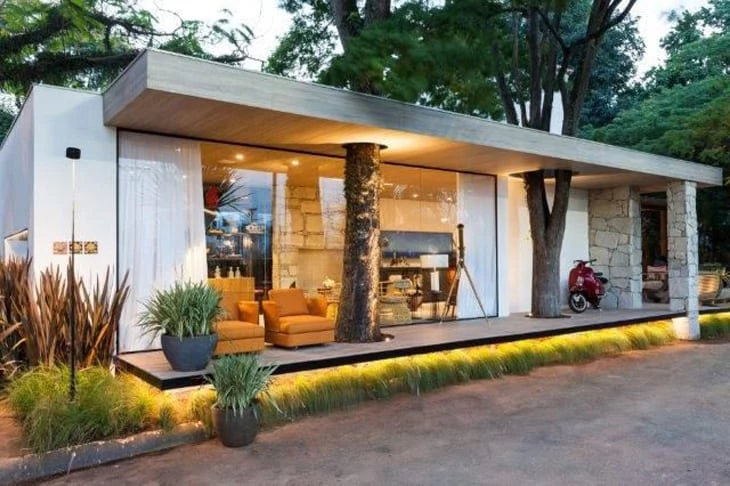
All the tips on species, foliage, and fruit are also valid for decoration with the use of trees in gardens and backyards. For more rustic houses, jabuticabeira trees, paineiras, and flamboyants go very well, as they remind us of old farms. For more modern houses, mirindibas are incredible and very elegant options. tatarés, with a sculptural trunk shape,already serve for a more minimalist garden, and can highlight the beauty of the trunks.
See_also: 50 ways to use neutral colors in decoration21 trees to beautify your sidewalk
Learn about some tree species and their main characteristics to help you in the ideal choice for your sidewalk. Always remember to get planting guidelines and take care of your space!
1. araçá (Psidium cattleianum)

Type: Native tree
Plant height: 3 to 6m
Color of the bloom: White
When it blooms: September - November
Fruit: Yes, it matures between December - March
Attractive for: Avifauna
2. parsley aroeira (Schinus molle)

Type: Native tree
Plant height: 4 to 8m
Color of the bloom: Yellow flowers
When it blooms: August - November
Fruit: Yes, not edible. They ripen between December and January
Attractive for: Avifauna and fauna
3. caroba (jacaranda cuspidifolia)
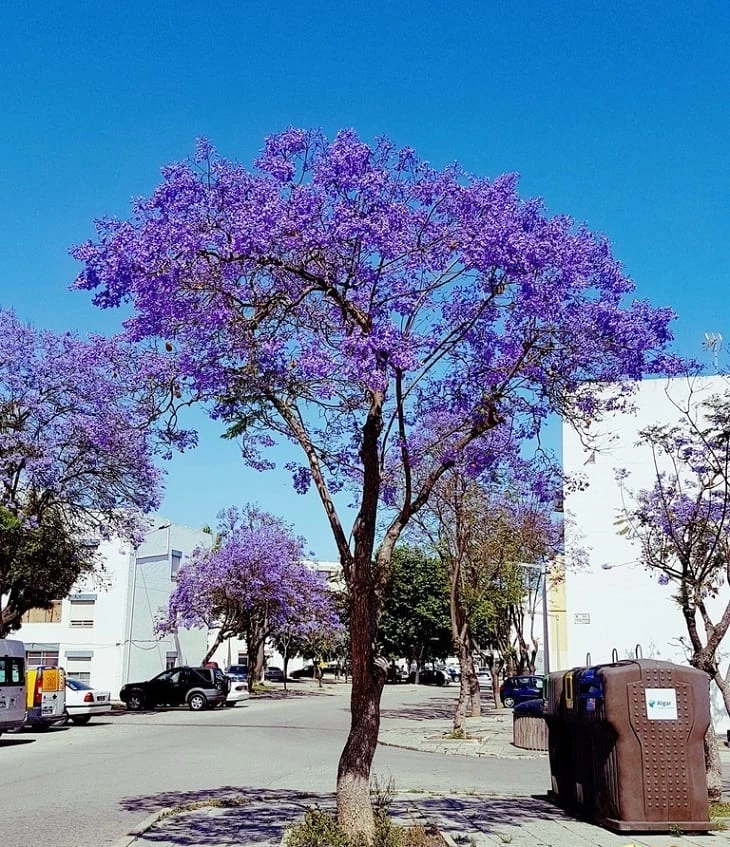
Type: Native tree
Plant height: 5 to 10m
Color of the bloom: Purple
When it blooms: September - October
Fruit: Inedible. ripen between August and September
Attractive for: Fauna
4. carobinha (jacaranda puberula)
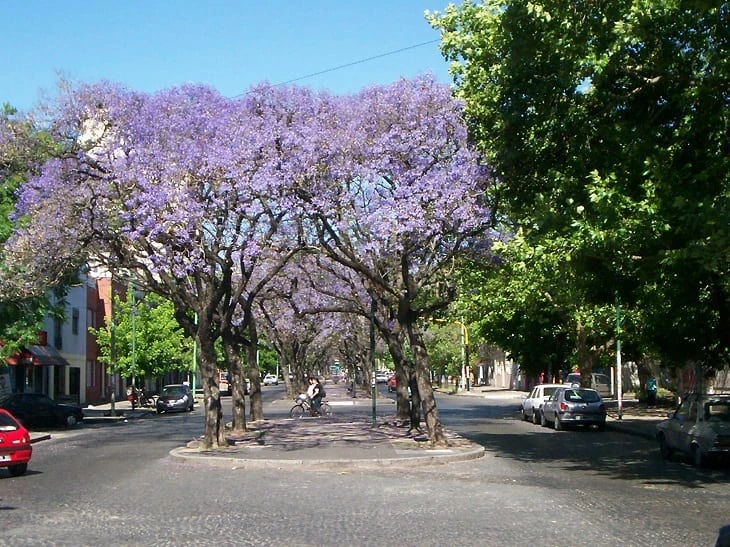
Type: Native tree
Plant height: 4 to 7m
Color of the bloom: Purple
When it blooms: August - September
Fruit: Inedible. ripen between February - March
Attractive for: Fauna
Cambuci (Campomanesia phaea)
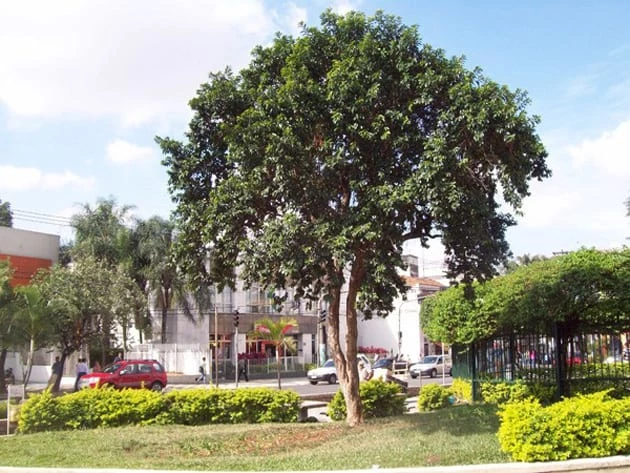
Type: Native tree
Plant height: 10 to 20m
Color of the bloom: White
When it blooms: September - November
Fruit: Yes, known as Cambuci pepper. They ripen between November - September
Attractive for: Fauna and Avifauna in the Atlantic Forest
6. candelabra (Erythrina speciosa)
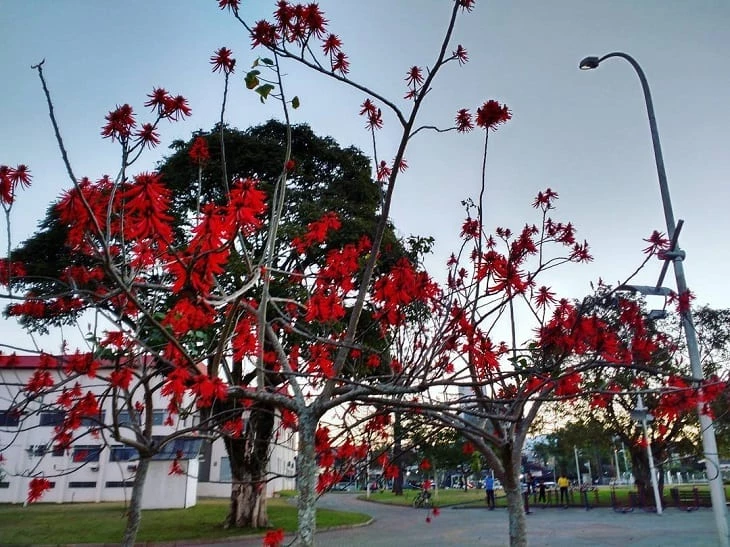
Type: Native tree
Plant height: 3 to 5m
Color of the bloom: Red
When it blooms: June - September
Fruit: Inedible. ripen between October - November
Attractive for: Avifauna
7. northeastern cassia (Senna spectabilis var. excelsea)
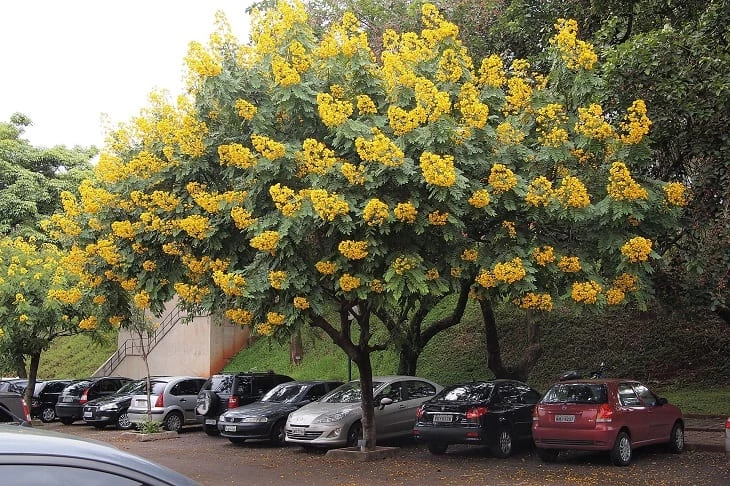
Type: Native tree
Plant height: 6 to 9m
Color of the bloom: Yellow
When it blooms: December - April
Fruit: Yes, not edible. They ripen between August - September
Attractive for: Fauna
8. big cherry (Eugenia involucrata)
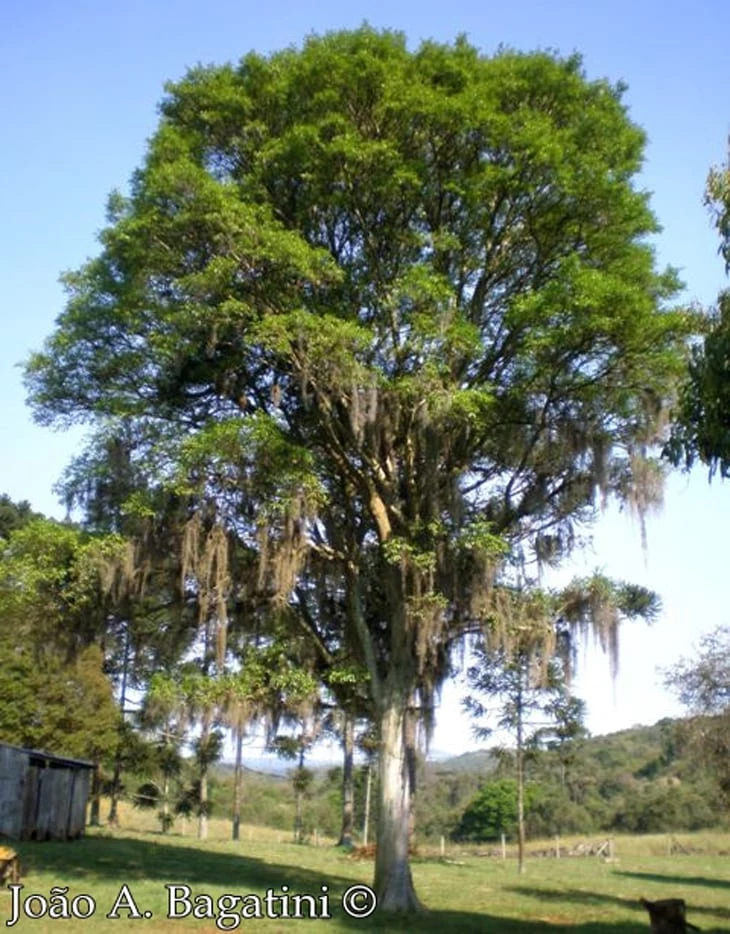
Type: Native tree
Plant height: 5 to 8m
Color of the bloom: White
When it blooms: September - October
Fruit: Yes, it matures between October - December
Attractive for: Avifauna
Japanese Cherry (Prunus campanulata)

Type: Exotic Tree
Plant height: 4 to 6m
Color of the bloom: Rosa
When it blooms: May - July
Fruit: Yes, they ripen from October to December
Attractive for: Avifauna
10. bottlebrush (Callistemon "Imperialis")

Type: Exotic Tree
Plant height: 4 to 5m
Color of the bloom: Crimson Red
Fruit: No
Attractive for: Hummingbirds
11. extremosa or reseda (Lagerstroemia indica)
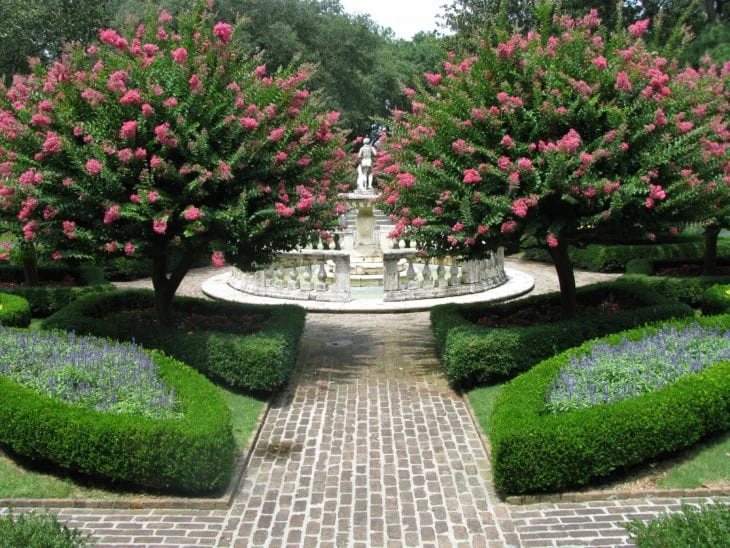
Type: Exotic Tree
Plant height: 3 to 5m
Color of the bloom: Rosa
See_also: Porcelain tiles for kitchens: Learn how to choose the perfect coatingWhen it blooms: November - February
Fruit: Inedible
12. flamboyant myrtle (Caesalpinia pulcherrima)
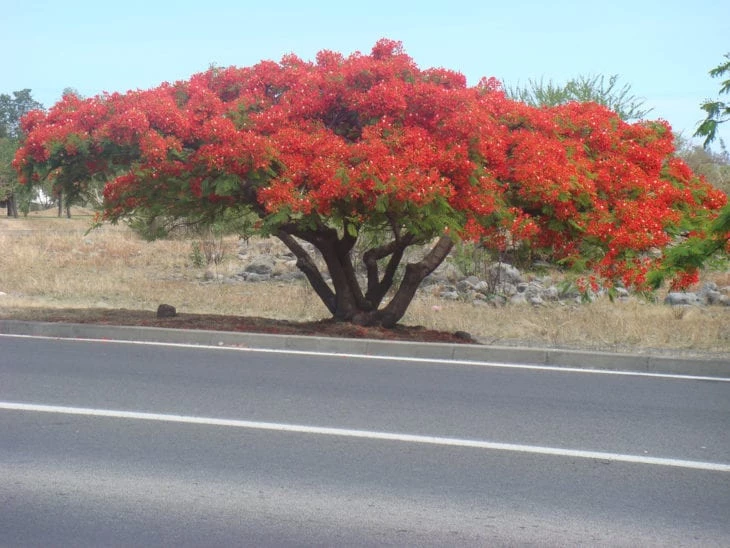
Type: Exotic Tree
Plant height: 3 to 4m
Color of the bloom: Orange
When it blooms: September - February
Fruit: Inedible
13. yellow Trumpet Tree (Tabebuia chrysotricha Mart. ex A.DC. Standl)

Type: Native tree
Plant height: from 4 to 10m
Color of the bloom: Yellow
When it blooms: August - September
Fruit: Yes, not edible. They ripen between the end of September and mid-October
Attractive for: Avifauna
14. mango-jasmine (Plumeria rubra)
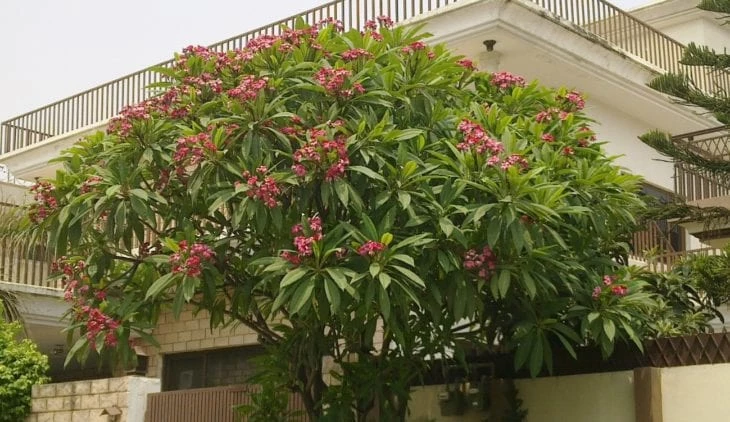 Type: Exotic Tree
Type: Exotic Tree
Plant height: 3 to 6m
Color of the bloom: Red or pink
When it blooms: Winter and Spring
Fruit: Inedible
Attractive for: Hummingbirds
15. yellow magnolia (Michelia champaca L.)
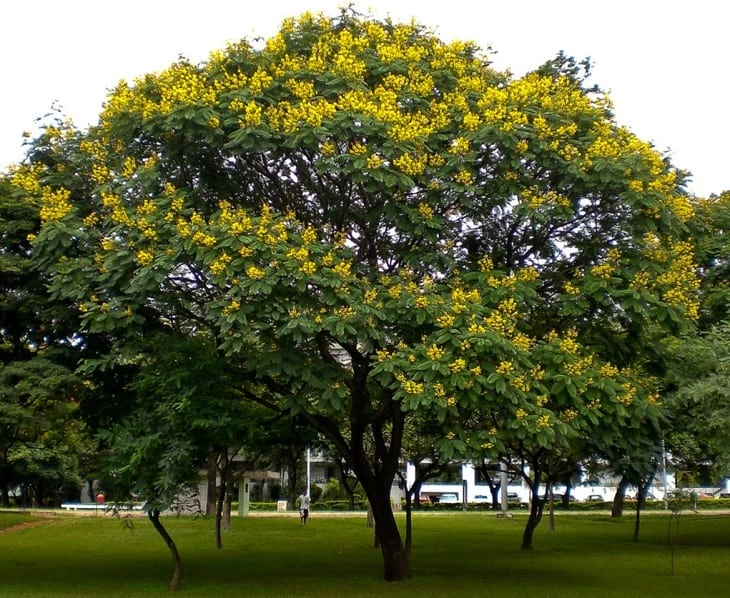
Type: Exotic tree, likes colder regions, like the south of the country
Plant height: 7 to 10m
Color of the bloom: Yellow
When it blooms: July - December
Fruit: Inedible
Attractive for: Avifauna
16. manacá da Serra (Tibouchina mutabilis)
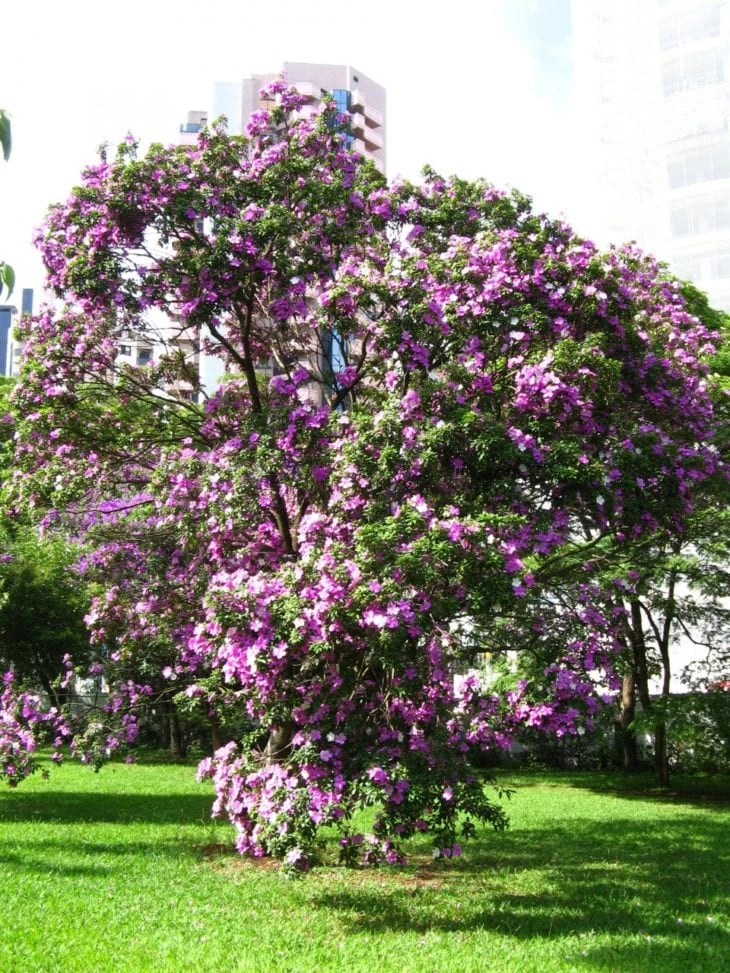
Type: Native tree
Plant height: 7 to 12m
Color of the bloom: Rose and mauve
When it blooms: November - February
Fruit: Inedible. ripen between February - March
Attractive for: Hummingbirds
17. oiti (Licania tomentosa)
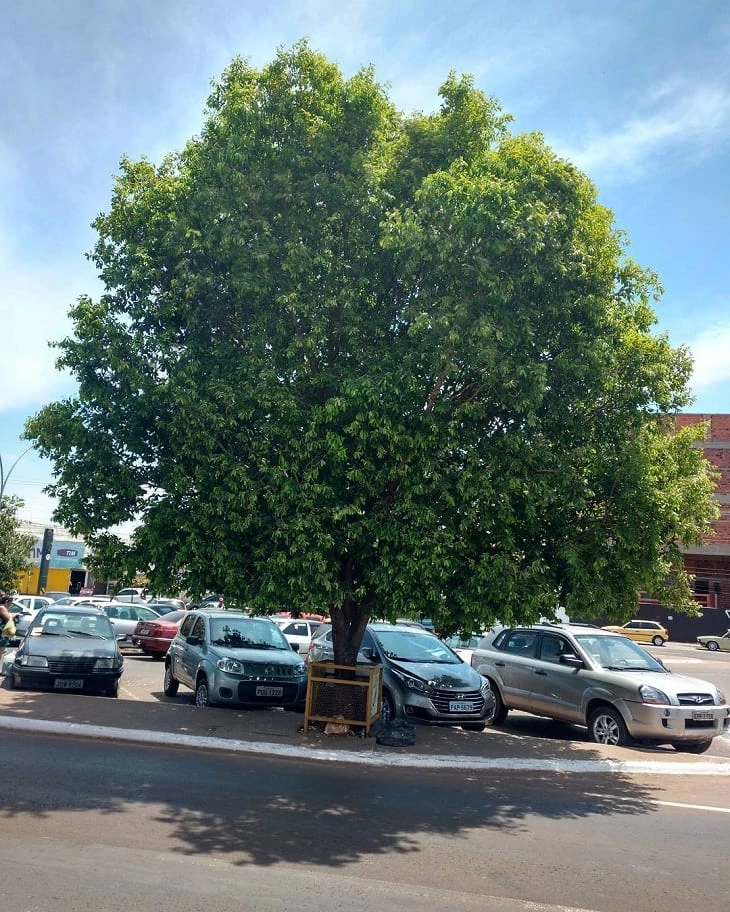
Type: Native tree
Plant height: 10 to 20m
Color of the bloom: Yellow
When it blooms: June - August
Fruit: Yes, it matures between January and March
18. pau-fava (Senna macranthera)
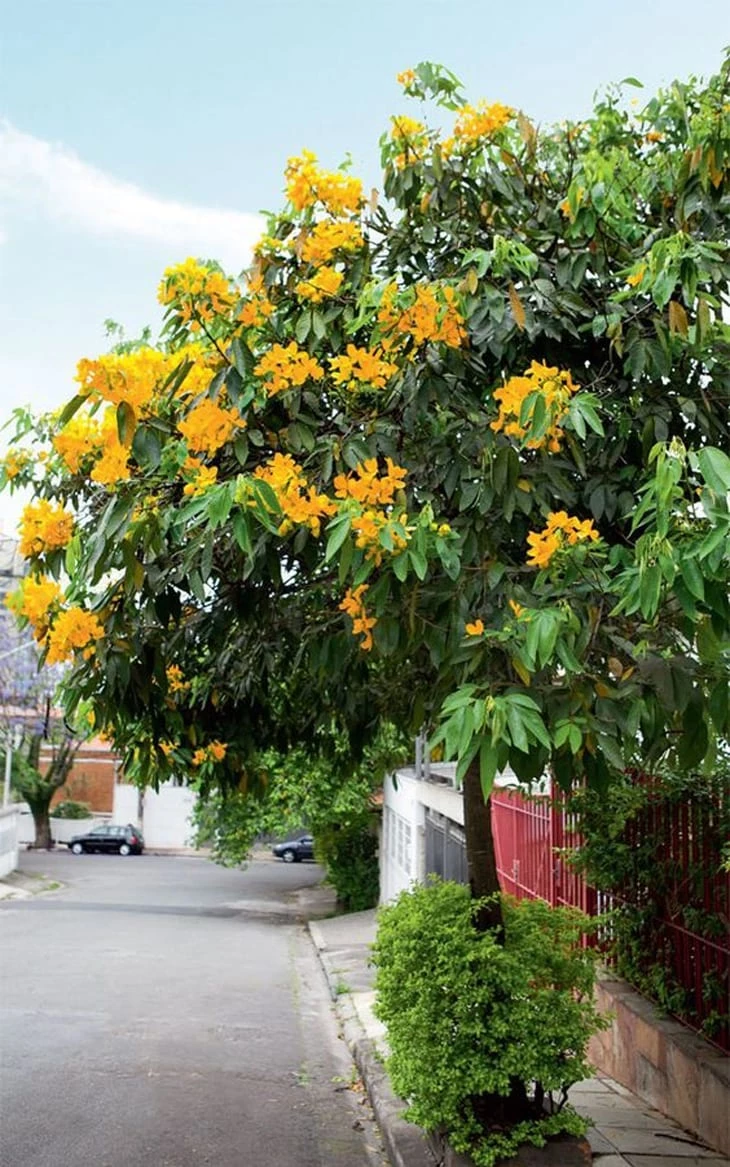
Type: Native tree
Plant height: 6 to 8m
Color of the bloom: Yellow
When it blooms: December - April
Fruit: Yes, not edible. They ripen between July - August
19. custard apple (Eugenia uniflora)

Type: Native tree;
Plant height: 6 to 12m
Color of the bloom: White
When it blooms: August - November
Fruit: Yes, they ripen between October - January
Attractive for: Avifauna
20. Bauhinia forficata (Bauhinia forficata)
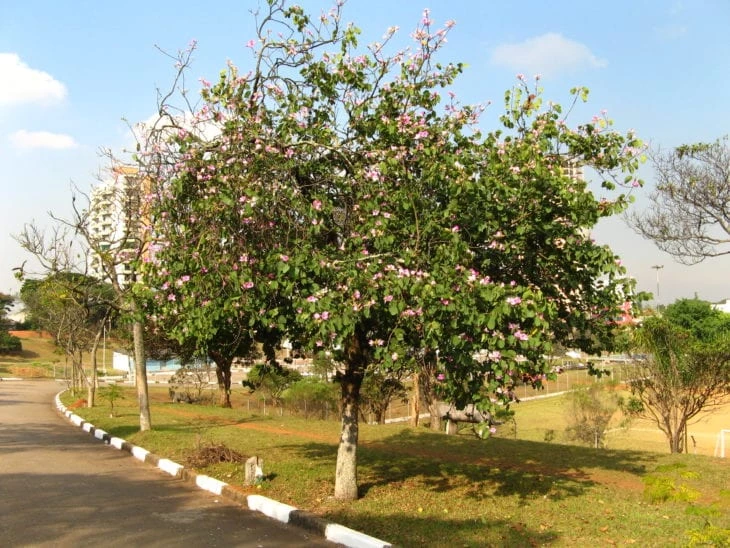
Type: Native tree
Plant height: 5 to 9m
Color of the bloom: White
When it blooms: October - November
Fruit: Yes, not edible. They ripen between July - August
21. lily-of-the-valley tree (Tibouchina granulosa)
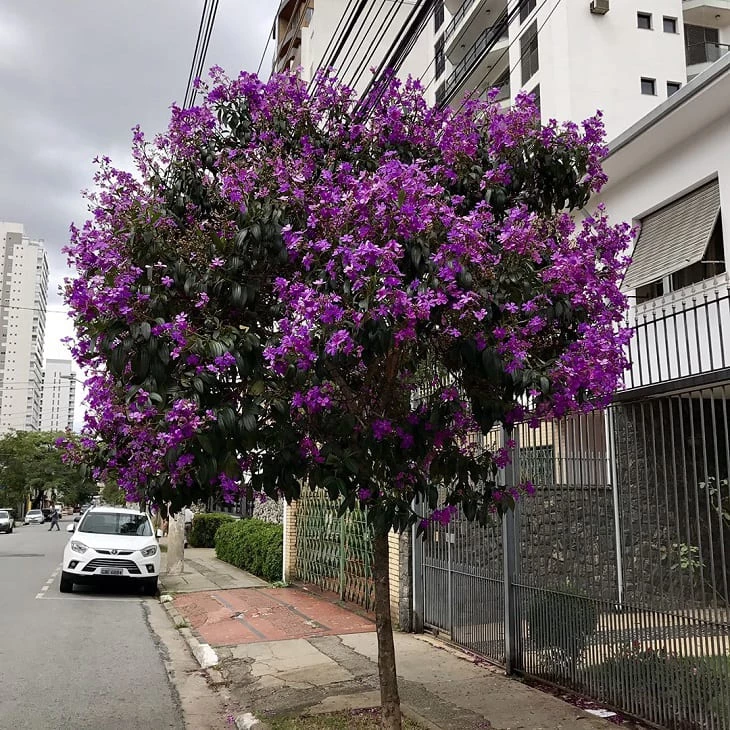
Type: Native tree
Plant height: 8 to 12m
Color of the bloom: Pink and lilac
When it blooms: June - August and December - March
Fruit: Inedible. They ripen between April and May, and late July to August
The list of species of trees for sidewalks can be even longer if you take into consideration their characteristics as tree species. Always be aware of aggressive roots, large fruits, toxic foliage and other details that can compromise their use. Moreover, always check the appropriate space for this urban kindness and make your best choice! Let's encourage this practice soAnd to make the front of your house more beautiful, check out ideas for house walls.


